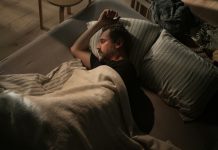
For many people, the winter months bring a form of depression called seasonal affective disorder (SAD).
SAD is characterized by symptoms such as daily feelings of sadness or depression, lack of energy, problems with sleeping, moodiness, changes in appetite and loss of interest in usual activities.
“It is most common among people who live far north or south of the equator and usually occurs in fall and winter, although some people experience SAD in the spring,” said Dr. Madhavi Singh, a family medicine physician with Penn State Health in State College.
“More women than men are diagnosed with this disorder, which most commonly appears between ages 20 and 30.”
The exact cause of SAD is not known, though three primary factors are suspected:
The body’s internal clock. The seasonal decrease in sunlight can disrupt the body’s circadian rhythms, which tell us when we should go to sleep and wake up.
Serotonin levels. Serotonin is a brain chemical that affects mood, and reduced sunlight can cause a drop in the amount of it in the body.
Melatonin levels. Melatonin is a hormone that helps regulate sleep patterns. Longer periods of darkness during cold-weather months can alter how much melatonin the body produces and when.
“Easy lifestyle changes can help anyone adjust to seasonal changes in daylight and avoid some of the effects of SAD,” Singh said.
“Most of these recommendations assist the body in getting the right amount of sleep at the proper time of day.”
Singh recommends:
Creating a brighter indoor environment by turning on lights, opening blinds and trimming shrubs that block windows.
Walking outside for 60 minutes each day, even when the sky is cloudy.
Exercising about three to four hours before bedtime, whether indoors or out.
Staying socially engaged, even though it’s tempting to stay home when darkness falls so early in the evening.
Forgoing caffeine in the late afternoon and evening.
Not going to bed hungry and choosing a light, healthy snack, such as a few crackers and a wedge of cheese.
Avoiding light-emitting devices, such as cellphones, close to bedtime.
Trying to maintain a regular sleep schedule by going to bed at the same time each day.
Sleeping only as much as needed to feel rested.
“This winter, set a goal of staying active instead of hibernating to help prevent the onset of seasonal affective disorder,” Singh said.
“However, if SAD sets in, make an appointment with a family physician to discuss symptoms and treatment.”
Singh says it is common to feel sad or tired occasionally, regardless of the season. Anyone who experiences ongoing symptoms during fall and winter should make an appointment with a physician.
“Light therapy is one of the most effective ways to combat SAD, using a special light box that emits full-spectrum light, similar in composition to sunlight,” Singh said.
The therapy often involves sitting for 30 to 60 minutes a few feet from the light box first thing each morning.
This daily light therapy often shows positive results in a few days or weeks, but should be continued until spring brings more sunlight.
The light box emits light about 20 times stronger than traditional indoor lighting.
“Although the risk of eye damage from a light box is minimal, it’s important to discuss specific needs with a medical professional before purchasing one to ensure safe and positive results,” Singh said.
In addition to light therapy, a physician might prescribe an antidepressant medication, perhaps with instructions to start taking it each year before the time when symptoms typically begin.
Psychotherapy, also known as talk therapy, can be used to learn healthy ways of coping.
Written by Scott Gilbert.



